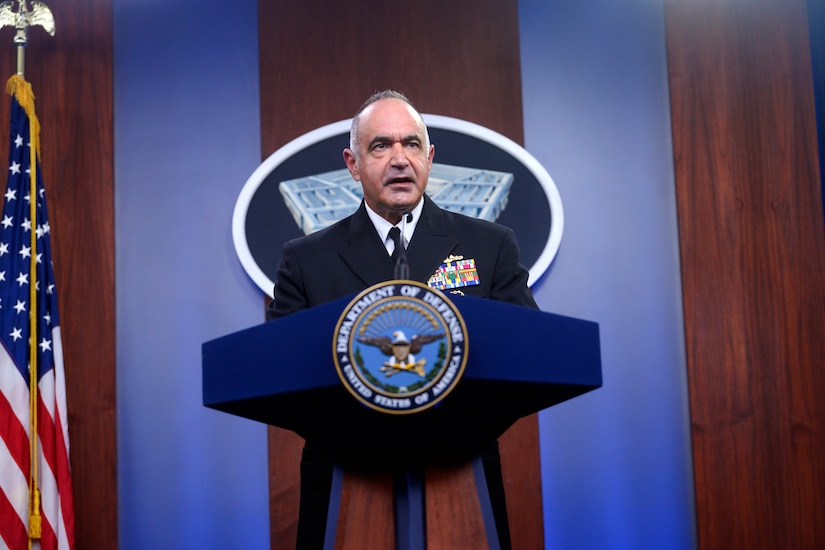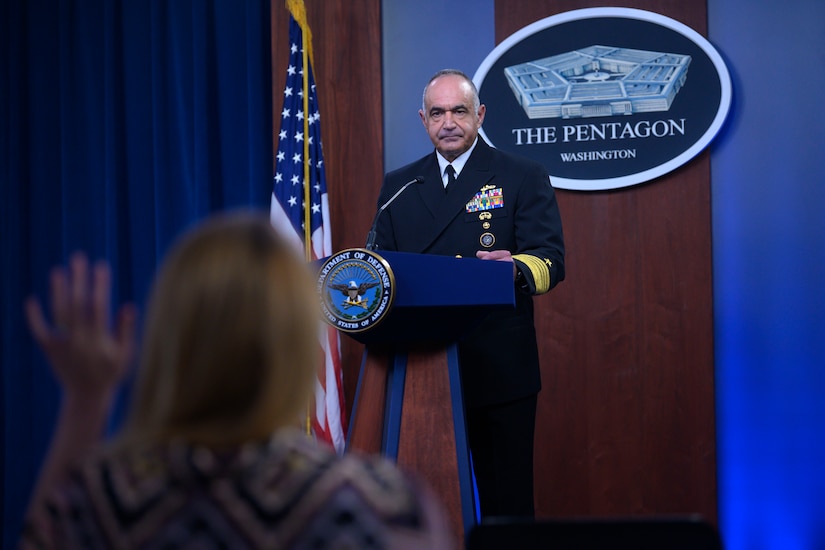Sept. 14, 2020 | , DOD News
Russian and Chinese military capabilities are growing, said the commander of U.S. Strategic Command, who outlined steps the department is taking to meet those challenges.
''Our competitors have continued to develop non-strategic and strategic capabilities in an effort to outpace us,'' Navy Adm. Charles ''Chas'' A. Richard said during a Pentagon press briefing today.

''We are on a trajectory for the first time in our nation's history to face two peer nuclear-capable competitors who have to be deterred differently, and we're working very hard to meet that challenge,'' he said.
Richard mentioned that the nations are not just increasing their nuclear capabilities, but they're also involved in military ventures in space and cyberspace and are advancing key weapons systems, including hypersonics.
''China [is] developing a stack of capabilities inconsistent with their stated 'no-first use' policy,'' he added. For instance, Beijing is now capable of threatening the U.S. homeland with its ballistic missile submarine fleet.
In response to these challenges, Richard said U.S. Stratcom has been modernizing all of its capabilities.
For instance, the Nuclear Command, Control and Communications Enterprise Center (dubbed NC3) is progressing nicely and will eventually be nested with the Joint All-Domain Command and Control, he said.

JADC2 is a combination of new technology and processes that will enable the joint force to connect sensors, data and communications with shooters. NC3 is the nuclear forces command and control element.
In another example, Richard said bomber task force missions are operating worldwide and, in particular, they're supporting allies and partners in the U.S. European Command and U.S. Indo-Pacific Command areas of responsibility.
Despite the COVID-19 pandemic, the 150,000 personnel at U.S. Stratcom are continuing to do their work, either on-site or remotely, he said.
''We are fully mission capable,'' he said. ''The bottom line is we're ready.''
A positive result of the pandemic is that personnel were able to efficiently and effectively telework and engage in distributed learning, Richard said, adding that his command will not go back to the way it did business before the pandemic, meaning he'd like to keep a lot of this capability in place permanently.
According to U.S. Stratcom's mission statement, the command's purpose is to deter strategic attack and employ forces, as directed, to guarantee the security of our nation and our allies.








No comments:
Post a Comment